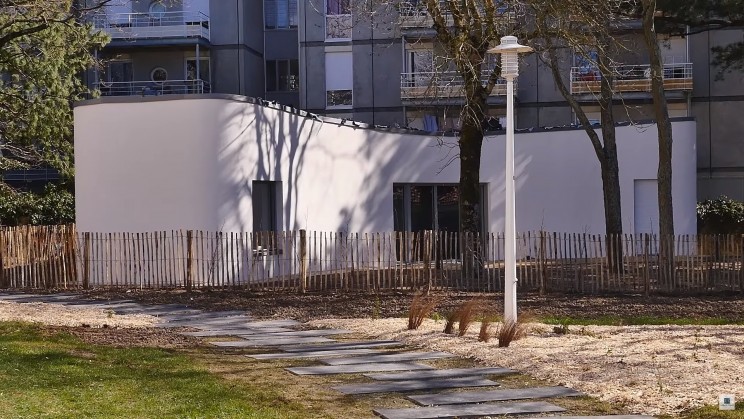The world's first family to live in a 3D-printed home
July 13, 2018 | Expert Insights

With the rise of new digital industrial technology, known as industry 4.0, manufacturers across industry verticals have started becoming more enthusiastic about 3D printing technology.
A family in France is the first to have moved into a 3D printed house. This 3D printed house is a four-bedroom property with a habitable space of 1,022 square feet, that would possibly serve as a model for future projects in the coming years.
Background
The Ramdanis in France would be considered the world’s first family to have moved into a 3D-printed home. The entire aim and concept behind the construction of such a building is to help make housebuilding relatively cheaper and faster. It also allows the builder to customize the building completely based on the customers needs, incorporating different materials and processes along the way.
The cost of the construction worked out to be 20% cheaper. While it took only took 54 hours to draw out the blueprint of the house using a machine named BatiPrint 3D, the entire construction took an additional four months with the fitting of all the doors, windows and the roof. The entire cost of construction worked out to be 176,000 euros, which would be considered the most attractive aspect of the project.
This construction involves the efforts of the University of Nantes, the entire city council and the construction company. A longer term aim of this project would be to assess whether 3D printing could be considered a viable option for the construction of buildings.
Analysis:
3D printing which is also known as Additive Manufacturing, is defined as a process of joining materials to be able to make a sustainable object from the 3D model. The process begins by modelling a blueprint of any object which must be printed in the design program, which then slices the objects into several layers, sending information to the 3D printer which then constructs the object by repeating this process.
So what does 3D printed homes mean for the future of social housing?
A major advantage of 3D printing is that with the use of effective technology, many architects find themselves becoming more creative with ideas and designs. Furthermore, with the high reduction in the material waste, the use of this technology is providing more environmentally friendly ways for the construction of homes as compared to the traditional methods of construction. The technologies that work along with the 3D printed homes would also include the digital controls, the curved walls which would not only help reduce humidity but even help analyze air quality, and help owners save on energy bills. Finally, all these settings can be controlled with the use of the smart phone.
“For 2,000 years there hasn’t been a change in the paradigm of the construction process. We wanted to sweep this whole construction process away. That’s why I’m saying that we’re at the start of a story we’ve just written,” said Francky Trichet, the council’s lead on technology and innovation. He believes that this concept could impact the entire construction industry.
With automated construction there is a major advantage in the aspect of time saving. As machines have the capacity to work continuously, it works faster and creates accurate models. A San Francisco startup called Apis Cor, 3D printed the entire house in the span of only 24 hours in Russia. The MITs mobile 3D printers can build any building within the span of only 14 hours. This could also be an ideal solution for quick housing during times of natural disasters and building emergency homes. Another advantage would be with respect to the cost involved as it not only helps save on the material cost but even on the tooling and the labor costs. Lastly, for any construction company, additive manufacturing brings new opportunities. With 3D printing, it is possible to print the house anywhere which is also a great solution to build houses.
Counterpoint:
However, a possible economic issue of 3D printing would be that the price per unit produced would be higher than in the traditional manufacturing, but the tooling cost would be zero. Hence for large production, the traditional manufacturing technique would cost lesser per unit produced. The higher tooling cost is what makes the traditional technique more expensive than additive manufacturing.
Assessment:
We believe that this paradigm shift in manufacturing is slowly giving a lot of importance to 3D printing. However, it would be too soon the answer countless questions that this disruptive technology will raise in the future as 3D has not yet fully transformed the economy. While considering the potential benefits of additive manufacturing, it is also important to consider the possible challenges. We believe that with the growing demand for cheap housing, 3D printing can revolutionize construction due to low costs and speedy construction.








Comments